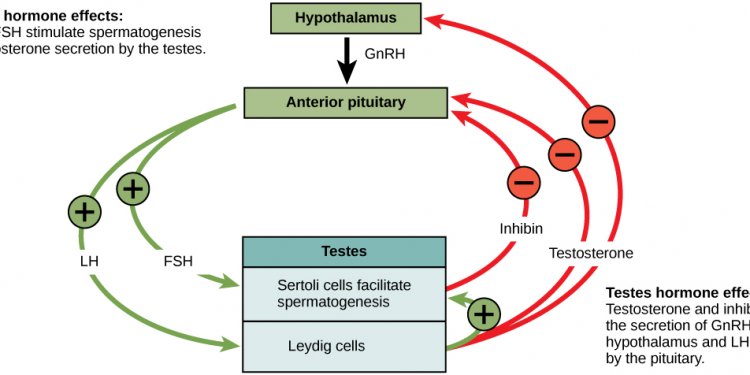The testes, which are paired oval shaped glands located in the scrotum. These produce sperm and the hormone testosterone, which assists in the development of the sperm.
a system of ducts, or tubes, containing smooth muscle which transport sperm:
the vas deferens (this is cut when a vasectomy is performed)
the ejaculatory duct
the urethra
accessory sex glands, which produce semen (the seminal vesicles, bulbourethral glands and the prostate)
the penis, which contains erectile tissue that fills with blood, allowing the penis to become rigid or erect.
sperm, which are contained within the semen (ejaculated through the ejaculatory duct via the urethra).
Nervous system control of the male reproductive system
Erection, emission and ejaculation are functions of the male reproductive system that enable sperm to travel from your reproductive ducts to the exterior of your body.
Erection
Nervous system control of your erection operates as follows:
Reflex erection of your penis, which occurs after direct stimulation of the penis, is under the control of your parasympathetic nerves from the S2, S3 and S4 levels of your spinal cord.
Psychogenic erection, involves conscious or mental levels of the brain, and is under the control of your sympathetic nerves from the T10-L2 levels of your spinal cord. Parasympathetic nerves from the S2-S4 levels of your spinal cord also contribute.
To maintain an erection you must have both reflex and psychogenic erection functioning together.
Ejaculation
Ejaculation involves two phases: emission and ejaculation.
Emission involves the production and release of semen from your reproductive glands and the contraction of your reproductive ducts, which propel the sperm into the urethra of your penis. This is controlled by the sympathetic nerves from the T11-L2 levels of your spinal cord.
Ejaculation is the releasing of sperm and semen from the urethra. Spinal nerves from the S2-S4 levels of your spinal cord control ejaculation and transmit sensation from your genitals to your brain.
Orgasm, which is part of normal sexual activity, is a total body response. In males, orgasm is usually associated with ejaculation, but ejaculation is not essential to orgasm.
Further information:
The pelvic, or pelvic splanchnic nerve is formed by the parasympathetic nerves from the S2-S4 levels of your spinal cord.
The hypogastric nerve is formed by the sympathetic nerves from the T11-L2 levels of your spinal cord.
The pudendal nerve is formed by the spinal nerves from the S2-S4 levels of your spinal cord.
After a spinal cord injury your sexual functions change. This may include sperm production, erectile function and ejaculation.
Reflex male sexual function
You have a reflex or upper motor neuron (UMN) injury if you have a spinal cord injury above your conus medullaris (the bottom of your spinal cord) but the S2-S4 levels of your spinal cord remain intact. This means that your spinal and autonomic nerves located at these levels still have their reflex function.
In a UMN injury reflex activity continues to occur between your spinal cord and your reproductive system. There will still be some changes to your sexual functioning:
Reflex erection is present.
Erection may not be functional or may not be maintained
You have decreased ability to ejaculate
You have decreased fertility levels
Atered orgasm and brain responses
Flaccid male sexual function
You have a lower motor neuron (LMN) injury if you have a spinal cord injury at or below the conus medullaris. Alternatively, severe lack of blood supply to any levels of the spinal cord, which occurs when an aortic aneurysm bursts, can cause the entire length of your spinal cord, including the conus medullaris to be damaged.
This type of injury causes damage to either the spinal and autonomic nerves in the S2-S4 levels of your spinal cord (cauda equina). Reflex activity no longer continues between your spinal cord and your reproductive system.
An LMN injury a significant effect on your reproductive system:
Reflex erection is absent
Psychogenic erection function may be present, depending on the level of your injury
Erection usually not maintained
Source: www.spinalhub.com.au

















